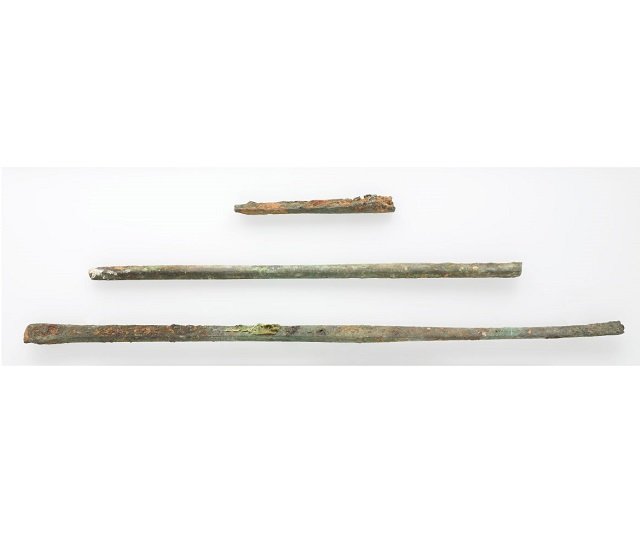Rods
- Object Name
- Rods
- Culture / Site
- Excavated at Durbi Takusheyi, Nigeria
- Medium
- Brass
- Date
- 14th century
- Dimensions
- Unknown
- Credit Line
- National Commission for Museums and Monuments, Abuja. Photograph by Volker Iserhardt
- Section
- The Long Reach of the Sahara/The Central Sudan and Durbi Takusheyi
- Description
These long brass ingots were buried within an elite grave at Durbi Takusheyi along with other copper-alloy objects made locally and imported from North of the Sahara. Copper was a sought-after commodity in trans-Saharan trade that was mined from sources in the Sahara and in Europe. The exchange of copper transported southward across the Sahara for gold is described in the mid-tenth century by ‘Ishāq Ibn al-Ḥusayn’: “Their country (the Sudan) has much gold, but the people there prefer brass to gold.” The origins of the metals alloyed to make these ingots is not clear. However, a preliminary isotopic analysis of the ingots and the copper-alloy objects cast in Durbi Takusheyi suggests possible sources in France, the Iberian Peninsula, and the Middle East. Thin rod-shaped copper ingots dated between the eleventh and thirteenth century were found at Ma’den Ifajen, Mauritania, and at Natamatao, Mali. Recent excavations at Tamdult, Morocco, by a Moroccan/UK team (Institut National des Sciences de l’Archéologie et du Patrimoine/British Museum) have recorded fragments of molds that would have produced ingots with a similar form to those excavated at Durbi Takusheyi.
